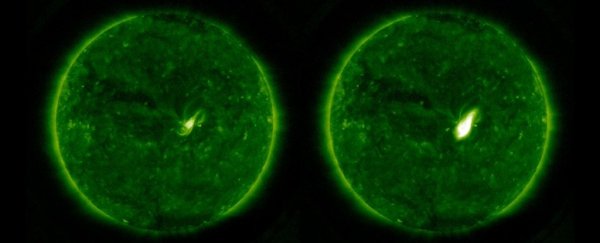Thanks to a long-duration solar flare belched out by the Sun earlier this week, Earth is buckling down for a geomagnetic storm at the higher latitudes.
On 12 February, a relatively mild C-class solar flare occurred, accompanied by a coronal mass ejection (CME), sending plasma and electromagnetic radiation out into space - some of it heading straight for Earth.
It may sound a bit scary, but it's not even remotely unusual. These coronal mass ejections are, in fact, amongst the things responsible for one of the most beautiful phenomena to grace the skies - the eerie light show we call the aurora.
This happens when the charged particles from the CME collide with atoms and molecules in the atmosphere, causing the sky to light up.
The solar wind can also cause auroras when it's particularly strong, but the auroras produced by the geomagnetic storms caused by CMEs are particularly clear and spectacular.
According to an alert for the storm issued by the US National Oceanic and Atmospheric Administration, those in higher latitudes, such as Canada, Alaska and Siberia in the north, and Antarctica in the south, may be treated to a magnificent light show in the nights ahead.
This is because the charged particles from the Sun get caught up in Earth's magnetic field lines, which direct them towards the poles.
Aurora isn't the only effect of a geomagnetic storm, though. High-frequency communication signals, which bounce of the ionosphere, can be affected, as can radio signals below 30 MHz at all latitudes.
GPS signals can also be affected. This is because the disturbed atmosphere can disrupt the signals being sent between the ground-based transmitter and the orbital satellites.
Thankfully, this storm is only a mild one, so the NOAA is only predicting very weak fluctuations in the power grid, caused by small surges of geomagnetically induced current - certainly not enough to knock the grid out entirely.
So if you're above around 65 degrees latitude, relax, go get a chair, and prepare to enjoy something truly awe-inspiring.
